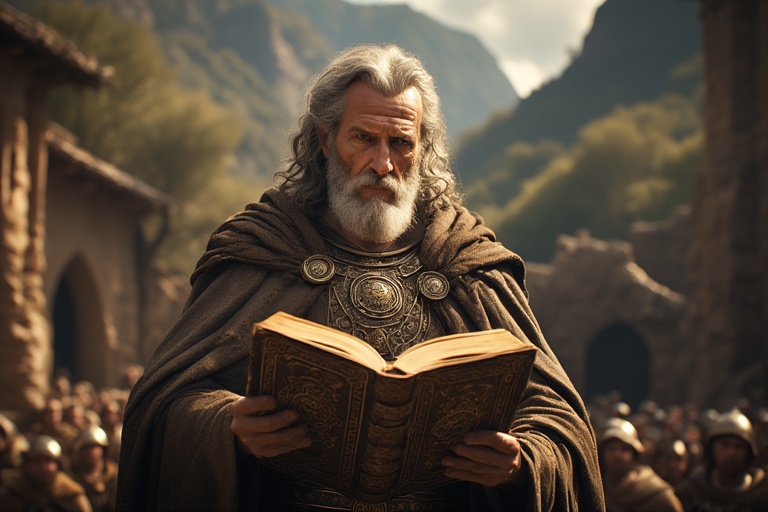
The Book of Enoch is one of the most intriguing and controversial texts in ancient Jewish literature. Though not part of the canonical Bible, it has captivated scholars, theologians, and believers for centuries. This ancient work offers fascinating insights into Second Temple Judaism and raises important questions about biblical interpretation, canon, and the development of religious thought.
What is the Book of Enoch?
The Book of Enoch is a collection of texts attributed to Enoch, the great-grandfather of Noah (Genesis 5:18-24). According to Genesis, Enoch "walked with God" and was taken by God without experiencing death. The book expands dramatically on this brief biblical mention, presenting Enoch as a heavenly scribe who receives divine revelations.
Structure and Content
The Book of Enoch is actually a compilation of several distinct works:
- The Book of the Watchers (Chapters 1-36): Enoch's visions of fallen angels, the origin of demons, and divine judgment
- The Book of Parables (Chapters 37-71): Apocalyptic visions of the Messiah, final judgment, and the fate of the righteous
- The Astronomical Book (Chapters 72-82): Detailed descriptions of heavenly bodies and calendars
- The Dream Visions (Chapters 83-90): Symbolic dreams about Israel's history and future
- The Epistle of Enoch (Chapters 91-105): Ethical exhortations and predictions
- The Book of Noah (Chapters 106-107): Additional material about Noah
Key Themes and Teachings
The Fallen Angels (Watchers)
One of the most distinctive features of Enoch is its detailed account of fallen angels called "Watchers." These heavenly beings descended to earth, married human women, and taught forbidden knowledge to humanity. This narrative expands on the cryptic reference in Genesis 6:1-4 about "sons of God" marrying "daughters of men."
Apocalyptic Vision
Enoch contains vivid apocalyptic imagery, including detailed descriptions of the final judgment, the coming of the Messiah, and the resurrection of the dead. These themes influenced later Jewish and Christian apocalyptic literature.
Calendar and Astronomy
The Astronomical Book presents a solar calendar of 364 days, which differs from the lunar calendar eventually adopted by mainstream Judaism. This suggests Enoch may preserve traditions from an earlier period in Jewish history.
Ethical Dualism
The text emphasizes a clear division between the righteous and the wicked, with detailed descriptions of rewards for the faithful and punishments for the unrighteous.
Biblical References and Influence
Though not in the canonical Bible, Enoch is referenced in Scripture:
- Jude 1:14-15: Quotes Enoch 1:9 word-for-word
- Genesis 5:24: Brief mention of Enoch's unique departure
- 2 Peter 2:4: References fallen angels, possibly alluding to Enochic traditions
The influence of Enoch can be seen in other biblical books, particularly Daniel and Revelation, which share similar apocalyptic imagery and themes.
Historical and Religious Significance
Second Temple Judaism
Enoch provides valuable insight into the religious thought and practices of Second Temple Judaism (roughly 515 BCE - 70 CE). It reflects the diversity of beliefs and the development of apocalyptic literature during this period.
Canon and Authority
The exclusion of Enoch from the Jewish and Christian canons raises important questions about how religious communities determine which texts are authoritative. The book was highly regarded in some Jewish circles but eventually rejected by both Jewish and Christian authorities.
Ethiopian Christianity
Remarkably, the Book of Enoch is still part of the canonical Bible in the Ethiopian Orthodox Church, where it is considered fully authoritative Scripture.
Modern Interpretations and Controversies
Scholarly Study
Modern scholars have identified multiple authors and redaction layers in Enoch, suggesting it was composed over several centuries. The earliest sections may date to the 3rd century BCE, with later additions extending into the 1st century CE.
Theological Debates
Enoch raises questions about:
- The nature of angels and their potential to fall
- The origin of evil and demonic forces
- The development of messianic expectations
- The relationship between heavenly and earthly realms
Popular Culture
In recent years, Enoch has gained attention in popular culture, particularly among those interested in ancient mysteries, alternative interpretations of biblical history, and speculative theology.
Approaching Enoch Today
For Biblical Study
Enoch is valuable for understanding the historical and cultural context of Second Temple Judaism and the development of apocalyptic literature. It helps illuminate references in canonical Scripture and shows the diversity of ancient Jewish thought.
Cautions and Guidelines
- Canonical Authority: Remember that Enoch is not part of the Protestant or Catholic biblical canon
- Historical Context: Read it as a product of its time, not as modern revelation
- Theological Discernment: Test its teachings against canonical Scripture
- Academic Study: Use reliable translations and scholarly commentaries
Recommended Resources
- Translations: George W.E. Nickelsburg's commentary and translation
- Scholarly Works: James VanderKam's "Enoch: A Man for All Generations"
- Contextual Study: Compare with books like Daniel, 1 Enoch, and Revelation
The Book of Enoch remains a fascinating window into ancient Jewish thought, offering both historical insights and theological challenges. Whether studied for academic purposes or spiritual curiosity, it reminds us of the rich diversity of religious literature that has shaped our understanding of Scripture and faith.